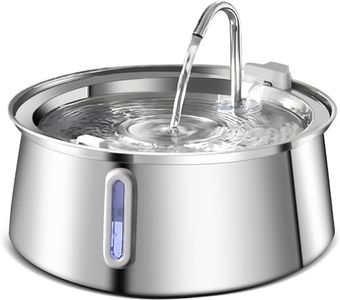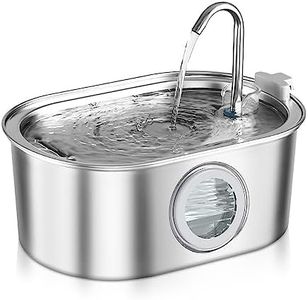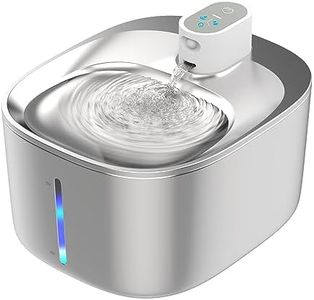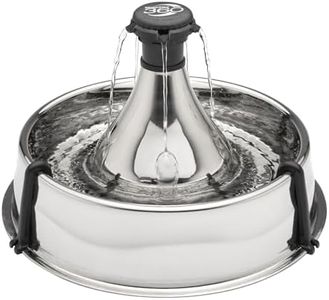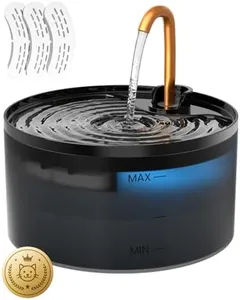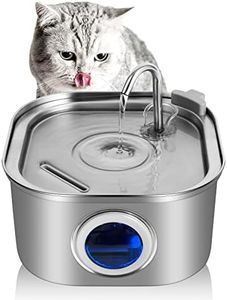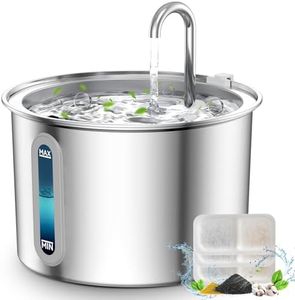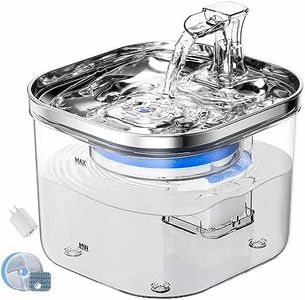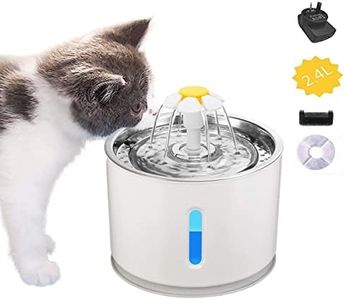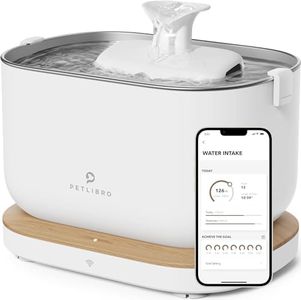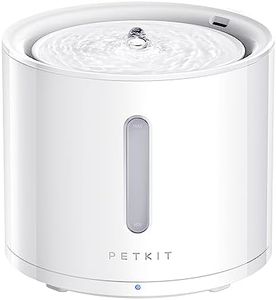We Use CookiesWe use cookies to enhance the security, performance,
functionality and for analytical and promotional activities. By continuing to browse this site you
are agreeing to our privacy policy
10 Best Cat Water Fountains
From leading brands and best sellers available on the web.By clicking on a link to a third party's website, log data is shared with that third party.
Buying Guide for the Best Cat Water Fountains
Choosing the right cat water fountain is important for your cat's health and happiness. Cats often prefer moving water because it's fresher and more appealing, which can help keep them hydrated. When selecting a fountain, think about your cat's habits, how much cleaning you're willing to do, and where you'll place the fountain in your home. By understanding the main features and how they impact both you and your cat, you can make sure you get a fountain that fits both your needs and theirs.CapacityCapacity refers to how much water the fountain can hold at one time. This is important because a larger capacity means you don't have to refill it as often, which is handy if you're busy or have multiple cats. Small fountains generally hold up to about 1 liter (good for a single cat and frequent refills), medium fountains hold 1-2 liters (suitable for one or two cats), and large fountains can hold over 2 liters (best for multiple pets or if you want to refill less often). If you have several cats or travel often, look for a larger capacity, but if you have limited space or just one cat, a smaller one will do fine.
MaterialCat water fountains are usually made from plastic, stainless steel, or ceramic. Material is important for both durability and how easy the fountain is to clean. Plastic is lightweight and affordable, but may scratch more easily and can harbor bacteria if not cleaned thoroughly. Ceramic and stainless steel options are more durable and hygienic, especially for cats with allergies or sensitive skin, but can be heavier and more fragile (ceramic) or more expensive (steel). If allergies or cleaning are concerns, go for ceramic or steel, but for portability or lightness, plastic may be enough.
Filter SystemThe filter system keeps the water clean by trapping hair, debris, and sometimes reducing odors or chemicals. Some fountains have simple foam or mesh filters, while others add charcoal filters for better freshness. Basic fountains may only trap larger debris, mid-range ones also reduce odors and impurities, and high-end systems may use multi-stage filtration. If your area has tap water with strong tastes or you have shedding pets, a fountain with a good filter is worth it. Always check how often filters need changing and ensure replacements are easy to find.
Noise LevelNoise level refers to how much sound the fountain's motor and water movement produce. Since cats can be sensitive to noise, and you may keep the fountain near your living or sleeping area, it's important to pick a quieter fountain. Some are almost silent, with water gently flowing, while others can hum or bubble. If your cat is scared by noises, or you want it in a quiet room, choose a low-noise model; if you prefer to hear the water (as a reminder to refill), you might be fine with a little sound.
Ease of CleaningEase of cleaning means how simple it is to take the fountain apart, wash it, and put it back together. A more complicated or fiddly design can make regular cleaning a chore, which is important because a dirty fountain can quickly become unappealing for cats and even unhealthy. Simpler designs, with fewer or larger pieces, are easiest to clean; some parts may be dishwasher-safe. If you want something you can clean quickly or have limited time, choose a fountain that's known for easy maintenance.
Water Flow SettingsWater flow settings allow you to control how the water moves—whether it trickles, bubbles, or flows in streams. Some fountains offer one constant flow, while others let you adjust the speed or pattern. This can matter because some cats like a gentle ripple, while others enjoy an active stream. If you're not sure what your cat likes, pick a fountain with adjustable settings so you can find what attracts your pet most.


